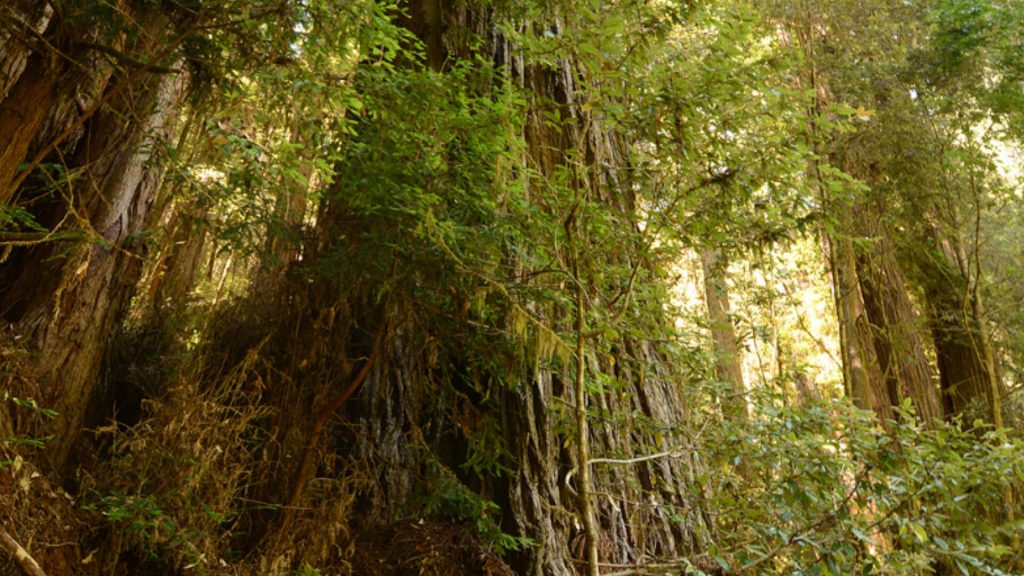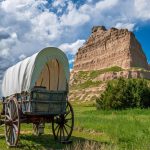The world’s tallest tree, a giant redwood called Hyperion, is hidden deep in Northern California’s Redwood National and State Parks. But its remote location hasn’t deterred hikers and nature lovers from seeking it out.
Now, the National Park Service is trying to protect Hyperion by threatening jail time and imposing steep fines for anyone caught near it. According to the parks service, all the attention is harming the trees and the fragile surrounding habitat.
The Discovery and Records
When naturalists Michael Taylor and Chris Atkins stumbled upon Hyperion in 2006, little did they know they had found a record breaker.

At 115.55 meters tall, the coast Douglas fir holds the title of the world’s tallest tree in the Guinness Book of Records. Estimated to be between 600 to 800 years old, Hyperion towers above all else in the forest.
Location of Hyperion Kept Secret to Protect It
To protect Hyperion, the park’s service is keeping its precise location under wraps. Revealing the tree’s coordinates could lead to further damage to the surrounding old-growth forest habitat.

According to park officials, the giant Sequoia already shows signs of harm from unauthorized visitors trampling vegetation and compacting the soil around its base.
Limited Access
Only a select few researchers are permitted to visit Hyperion for scientific study. The general public is banned from the area and risks legal consequences if caught trying to find the world’s tallest tree.

The secluded location deep within RNSP, paired with the parks’ limited GPS and cell service, means search and rescue operations would be challenging.
The Hyperion is Way Underwhelming in Person
While reaching nearly 116 meters skyward, Hyperion’s trunk is rather slender compared to other mature redwoods. Its staggering height isn’t even noticeable at ground level due to the dense forest canopy.

The parks service points out that the network of official trails offers the same sense of wonder amidst seas of redwood giants.
New Penalties for Visitors to Hyperion Area
Protecting the world’s tallest tree means keeping visitors away. According to the National Park Service, those caught near Hyperion, an enormous coast redwood, could face legal consequences.

Six months in jail and $5,000 fines. The park service has barred public access to the area around Hyperion, the world’s tallest known living tree. Anyone caught near the massive redwood may face up to six months in jail and fines of $5,000.
The Area Around the Hyperion Poses a Lot of Challenging Conditions
Even for experienced hikers, the area around Hyperion poses risks. Limited cell service and GPS make search and rescue operations difficult.

The park service noted that Hyperion is unimpressive up close, and the same sense of wonder can be found along the park’s many official trails.
Protecting an Irreplaceable Ecosystem
The coastal redwood forests of Northern California contain some of the tallest and oldest trees on Earth. Roughly 95 percent of old-growth redwood forests have been lost to logging.

Redwood National and State Parks protect what remains, including 45 percent of the remaining old-growth redwoods.
Why Hyperion’s Location Was Hidden for Years
According to the National Park Service, unregulated access to the area around Hyperion has led to “devastation of the habitat surrounding Hyperion.”

The agency aims to curb this damage by barring public access to the tree’s vicinity and threatening legal penalties of up to six months in jail and $5,000 in fines for those caught trespassing.
Protection for Recovery
Protecting Hyperion and allowing the habitat to recover requires cutting off access to this natural attraction.

While hiding such a natural wonder may seem counterintuitive, the park service emphasizes that the tree’s grandeur cannot be appreciated from the ground.
Dangers of Off-Trail Hiking
Venturing off marked hiking trails in Redwood National Park is dangerous for both the environment and the hikers.

The dense forest offers little visibility and no cellular service, making search and rescue operations difficult. The uneven terrain poses risks like sprains, fractures, and even loss.
The Significance of the Redwood Forests
The Redwood National and State Parks are home to some of Earth’s tallest and oldest trees. The coast redwoods, or sequoia sempervirens, are enormous evergreen trees that can live for over 2,000 years and grow to over 350 feet high.

These forests represent a unique ecosystem that contains threatened and endangered species. Protecting them is crucial to preserving biodiversity.
What Other Protected Trees Can Have You Sent to Jail?
In India, the Neem tree is revered for its natural medicinal properties and parts of it are used in Ayurvedic medicine. Cutting one down can result in up to seven years imprisonment. The Baobab trees of mainland Africa are estimated to live for over 2,000 years.

The bristlecone pines of California’s White Mountains are also safeguarded due to their age, with some being over 5,000 years old, making them the oldest known trees on Earth.
What’s Next for Park and Tree Enthusiasts?
While Hyperion will remain off-limits to visitors to protect the landscape surrounding it, the NPS still encourages people to explore the hundreds of miles of trails in the Redwood National and State Parks that wind through some of the tallest forests on Earth.

For those set on seeing the world’s tallest tree, the parks contain other massive redwoods that can be appreciated up close, such as the Stout Tree and Smith Tree.
Protecting a Natural Wonder
While Hyperion holds the record for the world’s tallest tree, the surrounding old-growth redwood forest offers just as magical an experience for visitors seeking nature’s awe and wonder.

The NPS aims to protect these ancient trees by restricting access, but their incredible height and longevity exist throughout the parks’ vast landscapes.






